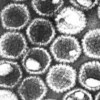Particle and Fibre Toxicology is published continuously online-only. To keep up to date with all of the latest articles, sign up to receive free email alerts by registering here.
Aims & Scope
Particle and Fibre Toxicology is a leading multi-disciplinary journal focused on understanding the physical and chemical properties of particles and fibres in relation to exposure and the resulting adverse human health effects (toxicity). Particle and Fibre Toxicology is fully open access and expertly peer-reviewed, functioning as a forum for debate and communication among scientists that produce and develop particle and fibre materials, including toxicology, material sciences, biomaterials, nanomedicine and other adjacent fields. The journal welcomes research on a diverse range of topics and provides a single, identifiable outlet for all these disciplines.
Full Aims & ScopeArticles
-
-
Acute exposure to polystyrene nanoparticles promotes liver injury by inducing mitochondrial ROS-dependent necroptosis and augmenting macrophage-hepatocyte crosstalk
-
The discovery of regional neurotoxicity-associated metabolic alterations induced by carbon quantum dots in brain of mice using a spatial metabolomics analysis
-
Micro- and nanoplastics concepts for particle and fibre toxicologists
-
Ferroptosis contributing to cardiomyocyte injury induced by silica nanoparticles via miR-125b-2-3p/HO-1 signaling
-
Toxicity of graphene-family nanoparticles: a general review of the origins and mechanisms
-
Principles for characterizing the potential human health effects from exposure to nanomaterials: elements of a screening strategy
-
Titanium dioxide nanoparticles: a review of current toxicological data
-
The potential risks of nanomaterials: a review carried out for ECETOC
-
Multifunctional Nanocarriers for diagnostics, drug delivery and targeted treatment across blood-brain barrier: perspectives on tracking and neuroimaging
Sign up to receive article alerts
Featured video: The air you breathe-Do nanoparticles pose a health risk?
Your browser needs to have JavaScript enabled to view this video
Video abstract summarizing the research article "Slow lung clearance and limited translocation of four sizes of inhaled iridium nanoparticles” by Rachel Smith, et al.
Editor-in-Chief
Aaron Erdely*, National Institute for Occupational Safety and Health, USA
*Aaron Erdely is undertaking this role in a personal capacity and any actions or statements in this capacity do not necessarily represent the official position of the National Institute for Occupational Safety and Health, Centers for Disease Control and Prevention.
Emerging considerations for micro- and nanoplastics research
Read the latest recommendations for particle and fibre toxicologists performing and disseminating research on micro- and nanoplastic particles, authored by the journal's Editor-in-Chief and other leading researchers in the field.
Micro- and nanoplastics concepts for particle and fibre toxicologists. Wright S, Cassee FR, Erdely A, Campen MJ. Part Fibre Toxicol (2024).
Best Paper of the Year Award
The ‘Best Paper of the Year’ award represents the best cutting-edge research published in the journal. The paper is selected by the journal's Editorial Board and is scored by its citations, downloads, and impact in the year.
This year's award was presented to Professor Ulrike Luderer and colleagues for their outstanding paper "Exposure to environmentally relevant concentrations of ambient fine particulate matter (PM2.5) depletes the ovarian follicle reserve and causes sex-dependent cardiovascular changes in apolipoprotein E null mice"
Particle and Fibre Toxicology blogs
Contact Us
Annual Journal Metrics
-
2022 Citation Impact
10.0 - 2-year Impact Factor
9.5 - 5-year Impact Factor
1.694 - SNIP (Source Normalized Impact per Paper)
1.805 - SJR (SCImago Journal Rank)2023 Speed
15 days submission to first editorial decision for all manuscripts (Median)
142 days submission to accept (Median)2023 Usage
749,083 downloads
1,528 Altmetric mentions


